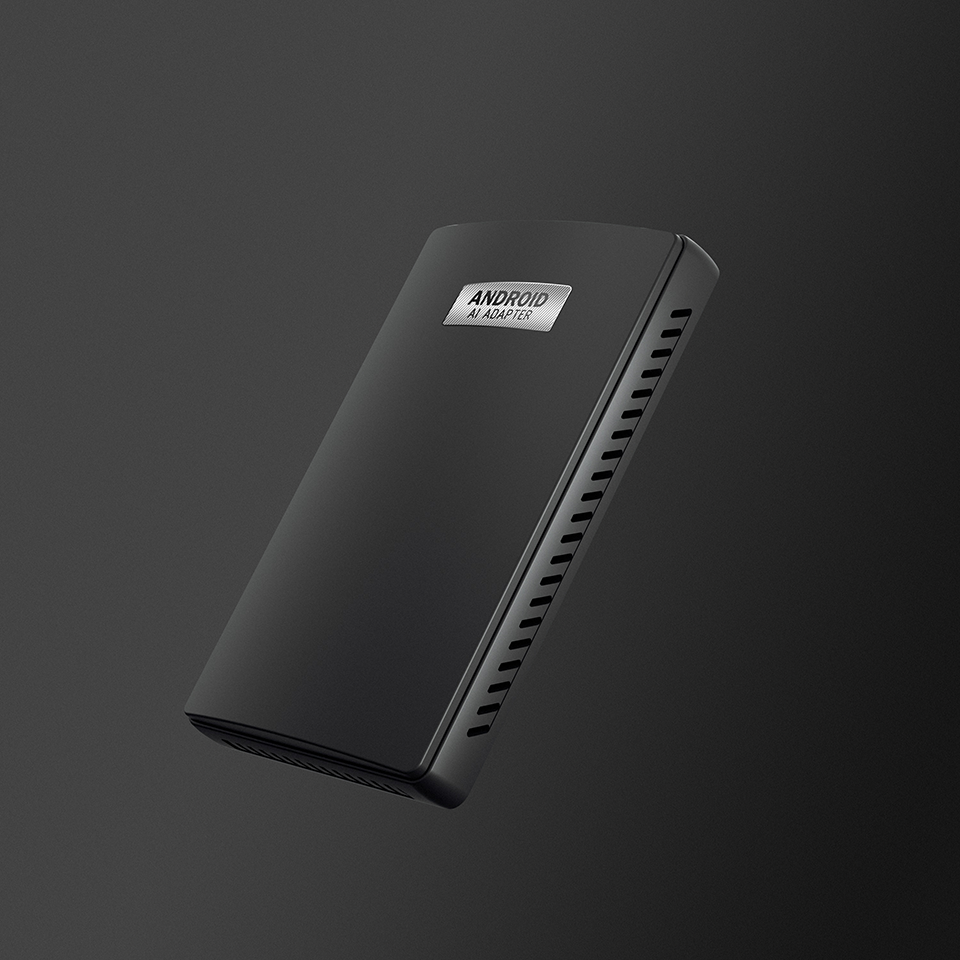The car industry in the transition from functional cars to intelligent cars, and unmanned driving by Google Corporation has led the R&D upsurge of world’s top car companies for auto driving, even Baidu has released an unmanned vehicle research program. But before this conceptual car really comes to the market, factories need to provide some useful and visible technology to meet the new needs of young users: the ubiquitous Internet, endless social circles, and endless publications and applications.
The integration of smartphones to speed up the mobility, interconnectedness, and sociality of the traditional automobile entertainment system has become the first choice of the major vehicles at home and abroad. With the release of CarPlay and Android Auto technology from the beginning of the year to the present, it has heated up the discussion of the before and aftermarket for the interconnected vehicle. The two types have the same technical features and user presentation, and the feeling is more like the iOS and Android platform ecosystem competition that extends to another screen in the car: "fourth screens".
MirrorLink is finally coming to maturity and outbreak period after the release of the ML1.1 version. Volkswagen, PSA, Honda, Toyota etc in Geneva published a pre-installed MirrorLink vehicle entertainment system, and Volkswagen's new Polo is the first to be listed in the European market to attract public attention.
There are dozens of vehicle interconnection schemes at least, all kinds of OBD schemes from Internet Co. and aftermarket, but CarPlay, Android Auto and MirrorLink three schemes that eventually become the mainstream trend. The reason is the support of car companies, the scale of car companies, the openness and attractiveness of platforms. Ford's Applink is difficult to form in the short term, and BMW's ConnectedDrive is just developing its own AppStore, and it's hard to imagine has any attraction to other car factories, mobile vendors, and developers.
This article will try to compare these three solutions from the perspective of technology and market, car and mobile phone manufacturers, mobile phone and application developers.
Technology and market
The application of CarPlay is limited to the two or three latest iPhone, mainly through the lighting interface to connect the mobile phone and the car to realize the screen mapping. In the future, it does not exclude the wireless connection mode that Apple will support the WIFI. In view of the relevant information that has been published, Apple will not give too much-customized space to the car factory and the supplier. The content and layout of the screen will depend on Apple Inc. The screen is completely controlled by the mobile phone.
Any customized app of the car factory needs to be adapted to new development according to CarPlay. Car entertainment system can control various app by CarPlay voice, touch screen, and many other ways. The high-end positioning of Apple's mobile phone, compared with the shrinking market of the Android camp, makes the car factory's support strategy become indispensable, and it is difficult to go all out.
Android Auto's applicable device is mainly for Android mobile phones. The mobile phone is connected to the car equipment by the USB cable. Whether it will support WIFI or Mirocast to connect in the future, it is not a problem in technology. Based on Google’s new global strategy, any device that supports Android Auto will try to best on the same HMI style, which is certainly good news for major automakers. The current car control method is also limited to voice control.
In the global smartphone market, the Android camp has accounted for about 80% of the share, Google's impact on the automotive industry is difficult to estimate, and the establishment of the OAA alliance has made this technology develop, but the game between the car factory and Google will also affect the technology. After all, being a terminal manufacturer is hard to satisfy the big car factories.
MirrorLink is available in a wide range of applications, except for iOS devices, which are supported by almost all major smartphone systems. In other words, MirrorLink is an independent platform. Connection mode support: Bluetooth, USB, WIFI (MirrorLink1.2) and so on. MirrorLink's open source and openness, the independence of the platform distinguishes it from the other two schemes, and the open protocols and SDK help developers and companies to meet the HMI customization needs of car manufacturers and mobile phone manufacturers. Almost all different resolutions and vehicle control methods are supported to make MirrorLink protocol and specification more suitable for automobile manufacturers. Covering about 80% of the world's car manufacturers and about 70% of mobile phone manufacturers,.The impact and participation of MirrorLink can be greater, and the MirrorLink certification and licenses led by car manufacturers and mobile phone manufacturers make it easy for them to launch customized apps. To distinguish it from other competitors, CarPlay and Android Auto draw on MirrorLink in terms of concept formation and function implementation, especially the authentication and ranking of App. Because of MirrorLink's long-term research on safe driving laws and regulations, considering the HMI adjustment and driving behavior of App, the other can not be reached in the short term.
Car factory and mobile phone manufacturer
CarPlay's focus on the extension of the iOS ecosystem has led to the embarrassing situation that the technology can only be dominated by Apple and passively accepted by the car factory. Other mobile phone manufacturers are doomed to be unrelated, and the factory may be able to support it based on user consideration, but it is hard to imagine that they will devote more energy to the iOS system.
The OAA alliance with Google's strong backing has highlighted Google's ambitions. As the first work of the alliance, Android Auto has attracted many car factories to join. Compared to CarPlay, the larger user base is the reason for the support of the major car factories, and the SDK release model independent of the Android cellphone manufactures is more likely to make no profit. With the support of Google and big car companies, this technology has a huge growth space. The openness of the Android and the success of the mobile phone have made the new App based driving safety springing up, but this is a feast for car manufacturers, developers and Google, and has nothing to do with mobile phone manufacturers.
The Mirrorlink, which was originally launched in 2011, was derived from the compatibility of Bluetooth and mobile phones. The traditional mobile phones are connected to the car by Bluetooth to realize the functions of hands-free and multimedia broadcasting. And the concept of MirrorLink is a natural extension of this idea, which tries to make mobile phones more functional and app able to transfer to the vehicle system to enrich and improve the user experience of the owners. MirrorLink is an ecological platform dominated by mobile phones and vehicle manufacturers, which makes the two party have greater voice and enthusiasm. After years of discussion and experiments, the major mobile phone and auto manufacturers have studied the traffic rules of various countries and regions. This technology is fully considered for vehicle safety driving. It is not difficult to find that CarPlay and Android Auto have drawn from MirrorLink to develop our platform.
Mobile and application developers
Because CarPlay support a limited number of iPhone devices, the relationship with developers can be an extension of the Appstore. Because of the high security of the apple, it is impossible to see the relevant technical requirements open to developers, It is good if the Apple Inc. can handle the mirror image conversion of the whole iPhone to the car's screen, but now it seems impossible. App have to adjust HMI and behavior to meet the requirements of safe driving.
Android Auto is more attractive to developers and companies than Carplay, which is already open to SDK. But for the time being, it don't seem to have much association about mobile phone manufacturers . Android Auto is more like OAA's first trial, but the influence and attraction of the Car Factory Alliance compared with Mobile Alliance for developers and companies is incomparable. It can be imagined that the app related to car owners will be joined first, while other types of APP need to wait.
At the beginning of 2014, MirrorLink was released Developer Fast Track, developers and companies can register and download the corresponding development documents free of charge. There are many App releases, but the Chinese market needs to wait and contacts. The prosperity of this platform can not be separated from the joint efforts of car&mobile phone manufacturers, especially for the latter, because they have greater influence and drive.
Summary
By the analysis of technology and market, car&mobile phone manufacturers, mobile phone&application developers, we can easily draw the following conclusions:1. There's not much difference in the implementation of the three technologies. CarPlay and Android Auto have learned a lot from MirrorLink to develop their own platforms. But given Apple's closeness, it's hard to imagine a bigger and better growth in market share and influence, and only openness will lead to participation and development. So Android and MirrorLink are better.
2. We can’t ignore the acceptance and participation of vehicle and mobile phone manufacturers. CarPlay does not have the participation of mobile phone manufacturers, only the car factory and Apple. Android also does not have the participation of mobile phone manufacturers, only OAA. MirrorLink is the most attractive platform, but the slow progress of this platform must be changed, otherwise, it is hard to develop between Apple and Google.
3. For App, the largest platform in the world can be AppStore and Google Play. CarPlay and Android Auto have also issued a number of App, They will undoubtedly have a congenital advantage and greater influence compared with MirrorLink, The potential is huge if the car and cell phone manufacturers are willing to invest more energy to encourage and drive the market, especially for the particularity of the Chinese market.
Trends and Prospects
To be sure, 2014 is the first year of the mobile phone interconnection program, the three schemes have been listed, and the MirrorLink from the second half to the beginning of next year is a big outbreak. Compared with the other two technologies, MirrorLink is more attractive to domestic car factories, cell phone manufacturers and App developers because of its open source, independence and security. The growing market share and discourse power of domestic mobile phone manufacturers need to expand new markets to extend their influence. Cars have become the largest mobile terminal, and mobile phone manufacturers and Internet companies will not miss this opportunity to expand their influence.

.png)
_副本.png)
